From stone to metal: ancient cities (part 1)
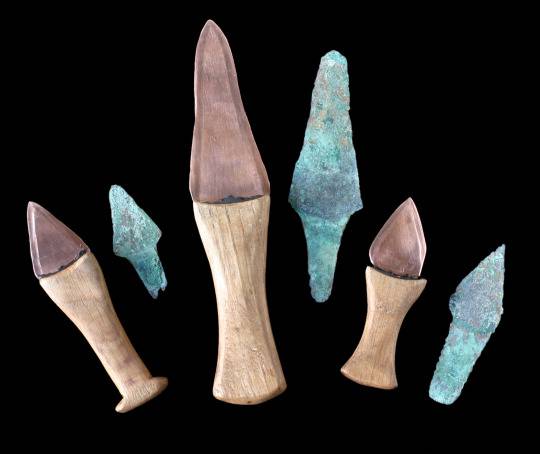
Ancient copper knives and their modern remakes.
At the same time, he briefly substantiated his idea that the stone age was the most ancient, followed by the period of using bronze tools, after which the iron age came with its iron tools and weapons. At the end of the 50 of the last century, an outstanding researcher and public figure Marselen Berthelot took up the analysis of metal archaeological objects. Studying the chemical composition of ancient bronzes, he noticed that a number of them are made of pure copper and do not contain tin additives. A truly French explorer could only appreciate this discovery after his trip to Egypt in 1869, at the grand opening of the Suez Canal. Then, after analyzing some of the most ancient Egyptian artifacts, he found that they also did not contain tin, and based on this, he suggested that copper tools were older than bronze ones. After all, they were made back when a person did not know tin. Well, he decided so simply because the technology for the production of bronze was considered more complex than the processing of pure copper. And that is why the Egyptians, for example, before all other metals, was known lead, which is very easy to smelt from ore.
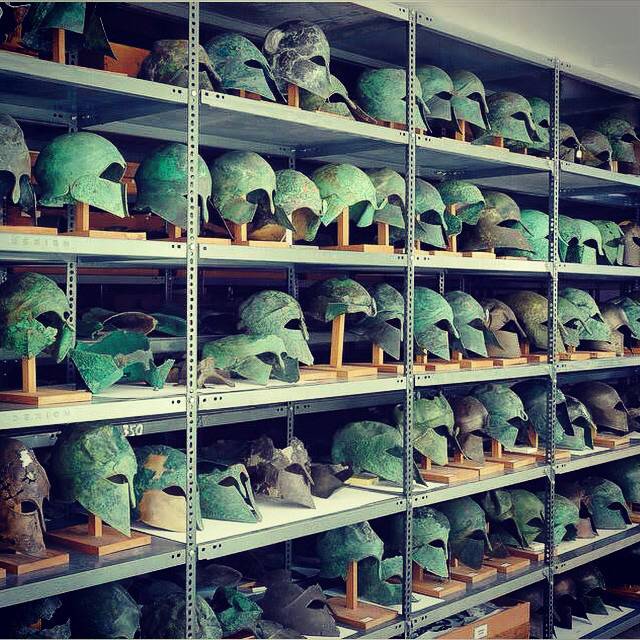
Neophytes, only a little "digging" historical sciences, they love to talk about the mass fake of bronze artifacts. But if they had glanced at the storerooms of at least some large museums, they would have imagined such an amazing number of unexposed samples that a significant part of the GDP of even an economically developed country would have been spent on falsifying them. And ... what, in this case, was the goal of producing all this, delivering it to different countries, digging it into the earth at different depths, and then waiting for everyone to find it? And if they don’t find it, then what? And this, not to mention the fact that many finds were made back in the Renaissance and under Peter the Great, when they did not even hear about radiocarbon analysis and the potassium-argon method. That is, a more stupid fabrication is hard to imagine.
Only after many decades will it be possible to prove that there are many artificial copper alloys that do not contain tin at all. It was from them that the items that Berthelot analyzed and recognized as "pure copper" were made. However, in general, he made the correct conclusion, on the basis of which the chalcolith (or Eneolith) was added to the Thomsen triad — the copper-stone age or the intermediate epoch between the Neolithic and the Bronze Age, or the initial period of the latter.
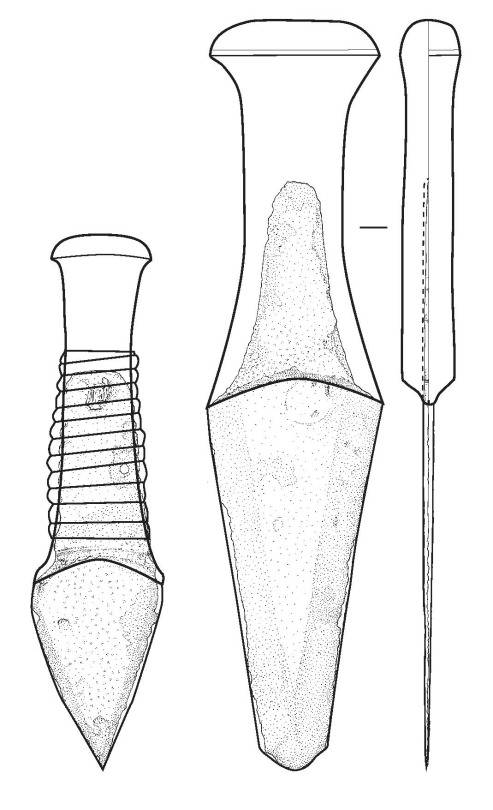
Metal products approx. 7000 BC and before 1700 BC: copper knives and their replica schemes. Archaeological Society of Wessex.
But even with the discovery of the Eneolithic, which apparently took a significant place in the history of mankind, the Thomsen triad was by no means destroyed. After all, bronze is an alloy derived from copper. After all, we do not use the term “steel age”, since steel is a derivative of iron, and no more.
Stone cutter Ashelian era. Museum in Toulouse.
Archaeological finds have been able to prove that the metal in people usually appeared after they mastered the ceramic industry. In addition, as a rule, these were not nomadic hunters, but sedentary farmers and herders. Moreover, this happened when people began to build and live in the first cities or city towns, as these settlements are called by some scientists, but who, nevertheless, had their surrounding walls and towers made of stone.
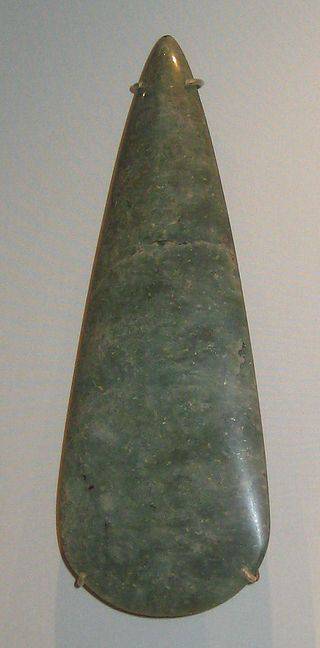
Jadeite Ax Canterbury, Kent, UK, approx. 4,000 - 2,000 BC. British museum.
However, a number of curious details also emerged. So, for example, as it turned out, the ceramic Neolithic was preceded by the pre-ceramic Neolithic, when in some settlements of this type dishes were made from wood and stone, but they already knew the metal. But in other cities they also did not know ceramics, they also used utensils made of stone, but they did not know the metal ...!
Obsidian arrowheads of the late Neolithic period ca. 4300 - 3200 BC. Archaeological Museum in Naxos.
The fact that all this was so, and not otherwise, is confirmed by the discovery in Palestine of such an ancient city as Jericho, dating back to the era of the pre-arc neolith! His English researcher M. Kenyon dug him back in the 50s of the last century. It was a real city, already in the IX century, occupying an area of about 1,6 ha, with powerful cultural deposits of thickness 13,5 m! A completely unique moat was found, carved out of the rock, and a massive stone tower with a height of 7,5 m, diameter at the base of 10 m, equipped inside with a stone spiral staircase.
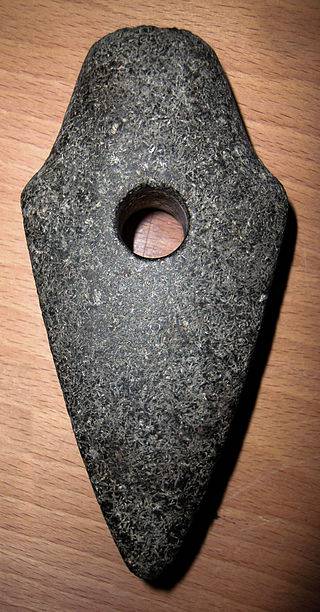
Drilled stone ax from Nasby, Sweden. Aneolithic
Its inhabitants did not know ceramics and, apparently, used only stone and wooden vessels. At the same time, they made clay masks on the turtles of their dead relatives and were able to grow cereals and graze cattle. Obviously, this was the very end of the Stone Age, and other settlements were also known, where people had similar rites. For example, in the villages of Basta and En-Ghazal in Jordan, residents also kept the skulls of their ancestors with realistically molded clay, which suggests that this custom was massive at that time, although these settlements were a thousand years older than Jericho years old!
Cyprus. Khirokitia. UNESCO cultural heritage.
In the seven thousand years BC, that is, in the Neolithic era, a highly strange civilization arose on the island of Cyprus. There were found several settlements belonging to the pre-ceramic culture, the largest of which was called Khirokitia - after the name of the village that lies today near the hill where it was excavated.
The excavation here was carried out from 1934 to 1946 by the Greek archaeologist Porfirios Dikaios, but was later interrupted due to the Greek-Turkish conflict. Only in 1977, French archeologists were again able to dig in Khirokitia and study the artifacts found there. As a result, a truly unique picture of the town planning of the Neolithic era opened up before scientists. The fact is that it was not an ordinary settlement. It was a real ancient city, representing a single architectural ensemble consisting of residential and farm buildings, a powerful wall separating it from the outside world, and a three-span, stone-paved road-staircase leading from the foot of the hill to its top, rising more than plain above the plain. on 200 meters.
Real hives, isn't it?
Yes, the ancient “city” was already in Khirokitia, but there was no metal yet. Its description should begin with the fact that it occupied the entire southern slope of the hill, which picturesquely descended three ledges to the river bank, and was also located along its course, and their location suggests that the river at that time was much more affluent than at present time. The city was surrounded by a stone wall 2,5 meter wide. We can only guess about its height, since the highest level that has reached our time is three meters, but, most likely, at that time it should have been at least a little higher. Archaeologists have excavated 48 buildings, but it turned out that this is only an insignificant part of a huge settlement of that time, in which there were thousands of houses. The structure of the buildings, some of which have been restored and can be entered today, is extremely original. These are cylindrical structures - tolos - with external diameters from 2,3 m to 9,20 m. And internal ones from 1,4 m to 4,8 m. The walls in some houses were plastered with clay several times, therefore in some dwellings they found up to 10 of such layers. In some houses there are two stone pillars, which are believed to have had to support the floor of the second floor, which could be made of branches and reeds. The hearth was on the first floor between these pillars. The doors had a high threshold and a floor recessed into the ground. So in order to get inside it was necessary to first step over it, and then go down the stairs to the dwelling. It is interesting that near each such building there are small round extensions, most likely for economic purposes. In this case, all the buildings are located so close to one another, which together give the impression of a hive.
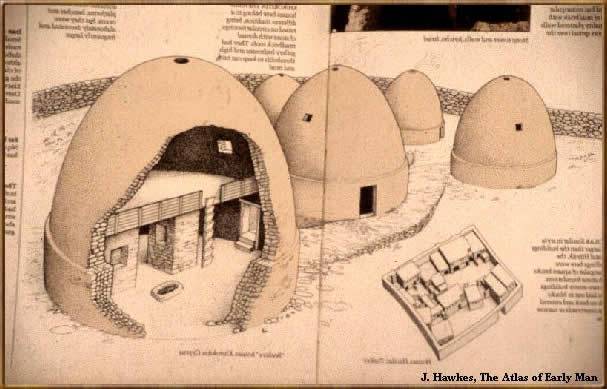
Or maybe they were like that?
For a long time it was believed that the roofs of these homes were dome-shaped. But when on one of them the remains of a flat roof were found, it was decided that they were flat, which was done on the buildings restored today in this settlement.
Pomos Idol is an ancient sculpture from the Cypriot village of Pomos. It belongs to the Eneolithic era (XXX century BC). Currently on display at the Cyprus Archaeological Museum in Nicosia. The sculpture depicts a woman with her arms spread apart. Most likely, this is an ancient symbol of fertility (fertility). In Cyprus, at one time, quite a few statuettes similar to it were found, including smaller ones, which were most likely intended to be worn around the neck as amulets.
Interestingly, for some reason, the inhabitants of this ancient “city” were buried right in their homes. The deceased was laid in a hole dug in the middle of it, sometimes it was crushed with stones, then it was covered with earth, and the floor was tamped down, leveled, and continued to live in this house further. Why they did this, today we can only guess, but there is a fact of special spiritual closeness between the living and the dead inhabitants of ancient Khirokitia, and it was she who forced them to do so and not bury the dead away from their homes, as was the case in most others. peoples.
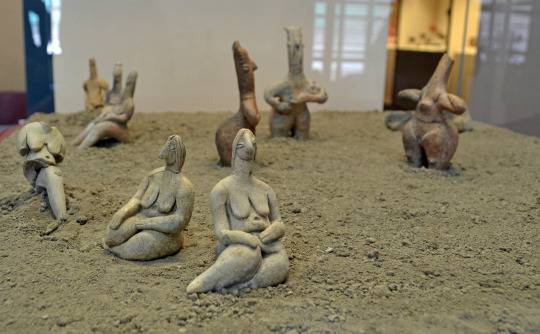
Ceramic figures. Archaeological Museum of Aiani. Macedonia
However, archaeologists only benefited from this form of burial, since each new house gave them rich material for studying the life and daily lives of the people who lived here. However, before we talk about the items found in these graves, let's try to restore their appearance, which was possible only thanks to such a specific form of burial.
It turned out that the growth of Hirokytians was small - in men, the average height did not exceed 1,61 meters, women were even lower - only about 1,5 meters. Life expectancy was also low: about 35 years of age men and 33 years - women. Not a single burial of the old men has been found, and this is very strange, because for more than a thousand years of living a fairly large group of people in one place, several old people could well have been found. But there are many burials of children, which indicates a high child mortality rate. The departed in the graves are found in "rolled up" poses, and along with them are various household items and decorations. First of all, these are stone bowls, often broken, apparently with some kind of ritual purpose (they say, the person “left”, so they broke the bowl!), Stone beads, bone hairpins, pins, needles, and also stone anthropomorphic figurines without any signs of gender. It is also very interesting that no special religious places were found in this settlement, from which it was concluded that there was no religion or cult in the Neolithic settlement of Hirokitiya as such, in the modern sense of the word. Although it is possible that they still had a religion, only its rites in religious places simply did not need.
This is what the excavation site looks like. Of course, for a layman, this is not a very impressive sight.
As for stone tools, in their manufacture the inhabitants of the city reached a high level, which, as a rule, is a very characteristic feature of the pre-ceramic cultures of the Neolithic era. Almost all of the dishes found here were made of greenish-gray andesite - a volcanic rock. Archaeologists have found and round, and rectangular, and oblong in shape stone bowls, which had a length up to 30 centimeters. Some of them were decorated with carvings in the form of strips or rows of ribs, indicating that Hirokitians had a very definite aesthetic style of life. It is found and it is not known why the river pebbles used are covered with carvings. The women's jewelry found in the graves was represented by stone beads and pendants of carnelian and gray-green picrite, one of the types of basalt, as well as beads of shells-dentals, whose shape resembled boar tusks. The fact that among the finds were made of obsidian sickles, tips for arrows and spears, and a number of other items, and there is no obsidian in Cyprus itself, indicates the presence of contacts with Asia Minor and Northern Syria among the inhabitants of Hirokitiya. And it is clear that they could only carry them out by sea. Consequently, the Hirokhitians either swam by sea themselves, or contacted those who swam and, accordingly, traded with them. During the excavations, even a small piece of fabric was found, which will allow to find out what people of the Neolithic era could wear. Well, and the findings of bone needles indicate that they already knew how to sew their clothes.
Early Bronze Age. Knives from the Cycladic Islands 2800 - 2200 BC. Archaeological Museum in Naxos.
The Hirokitians engaged in farming. And although no cereal grains were found during the excavations, the archaeologists made this conclusion on the basis of the sickle blades, hand grain grains and stones they found for grinding grain. Accordingly, the arrowheads and spears indicate that they were engaged in hunting, and the bones of sheep, goats and pigs, that they knew animal husbandry, although it is not necessary that they are bones of domestic animals. Why scientists can not explain why the Hirokitians, who settled in the seventh millennium BC here by the river, on these picturesque slopes, they lived here in this city for a thousand years, reached their apogee in the development of their pre-ceramic stone culture, it can be said, and then disappeared without a trace, it is not clear where and why. And only fifteen hundred years later, this place attracted the attention of people who settled here and brought with them a completely new Neolithic culture with painted in red and cream tones, very characteristic and very beautiful, ceramics.
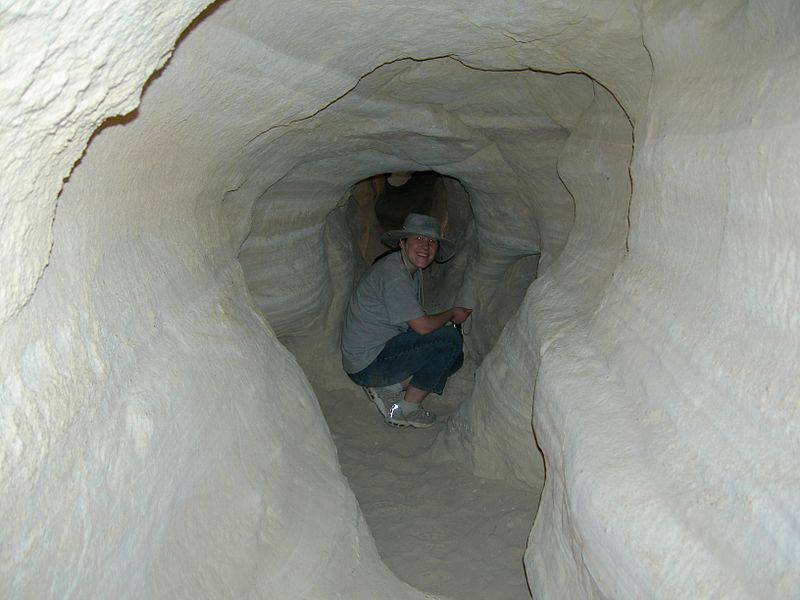
Prehistoric copper mine in the Negev desert in Israel.
That is, exceptions to the rules have always been and will be, probably. True, to judge this is quite difficult, because archaeologists have excavated not all, including in Cyprus. But, as we have already noted, in Khirokitia and in other settlements this metal culture was not found. There was no metal and those who settled in these places after a thousand years! Where, then, did archeologists find the first metal products? This will be in the following material.
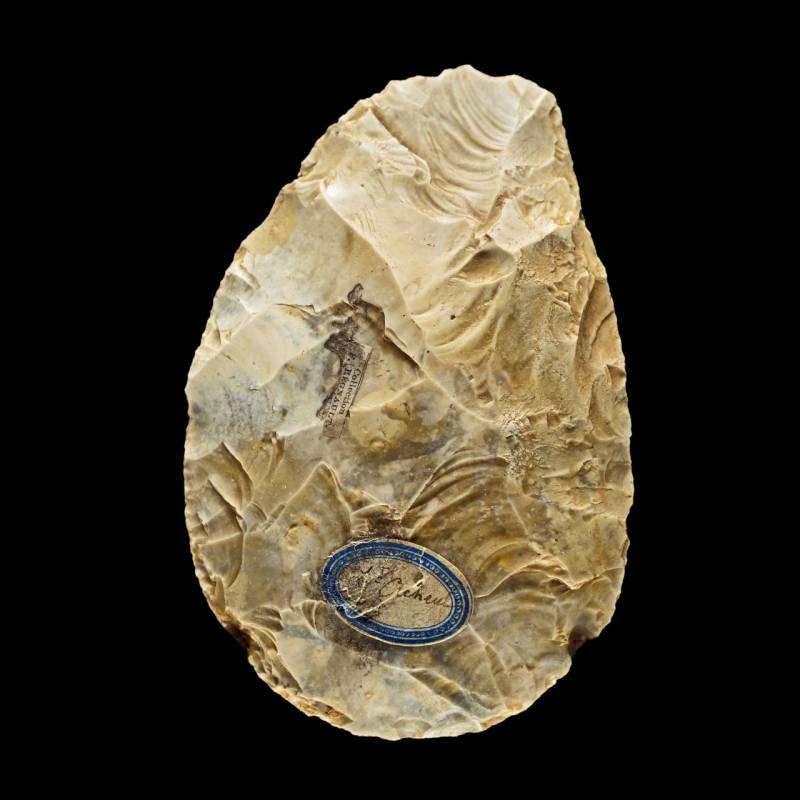
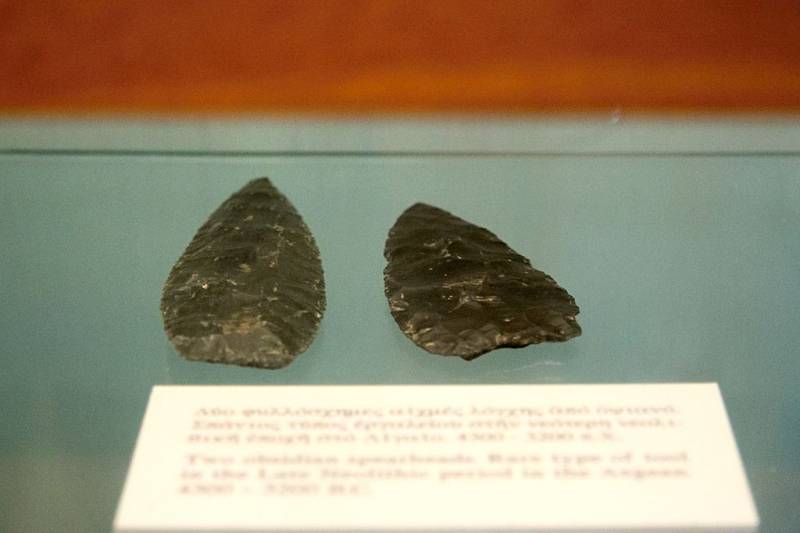
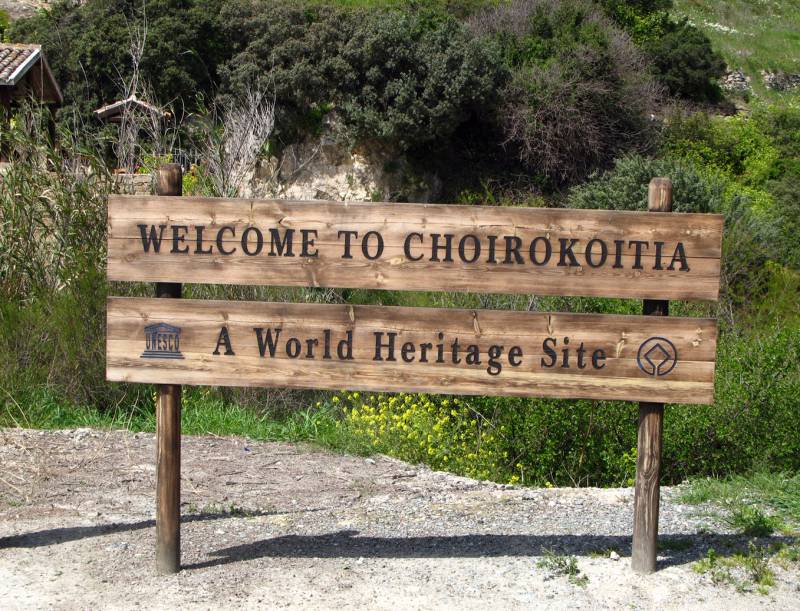
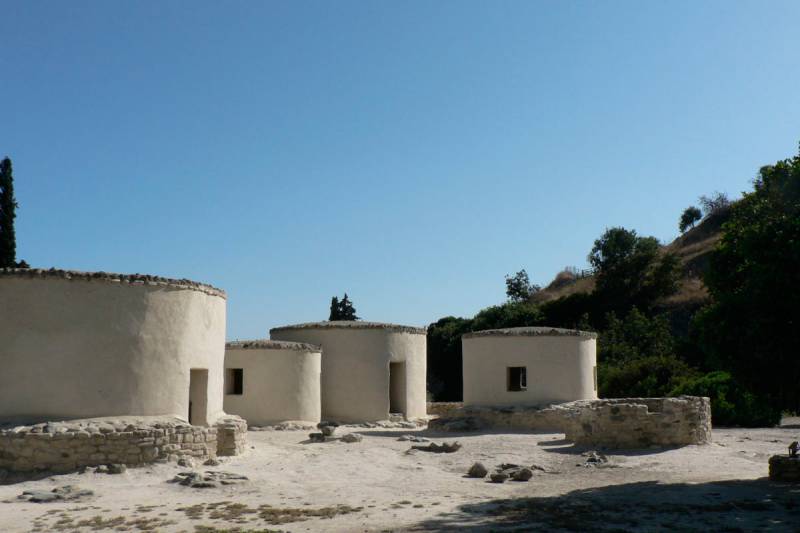

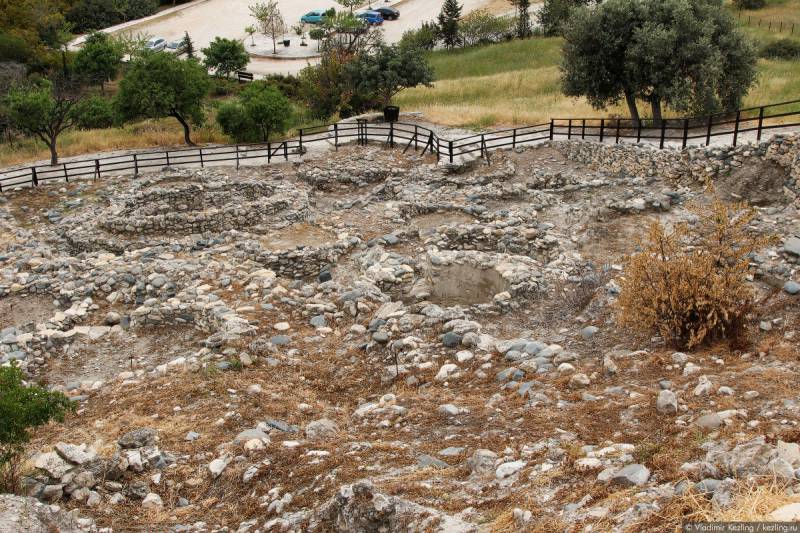
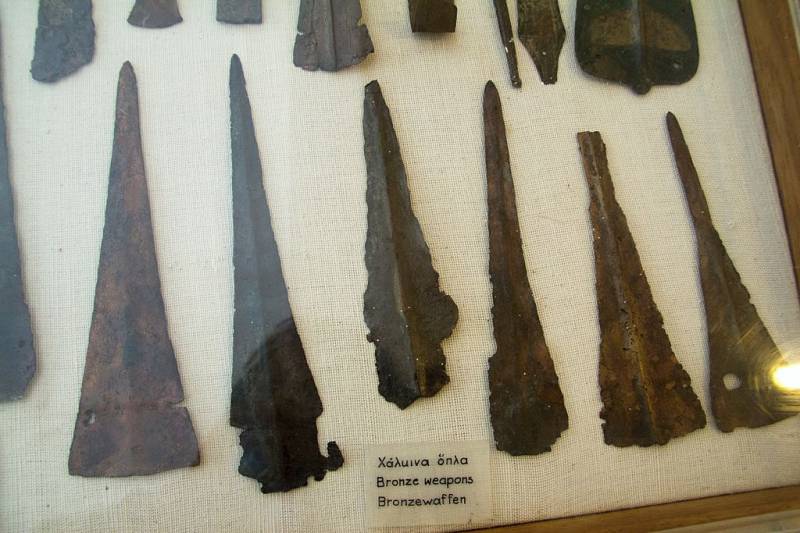
Information